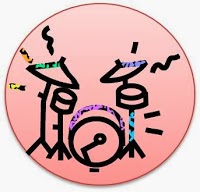For Drummer Hearing Protection,
- Use a simple Foam earplug for basic practice. These are comfortable, reusable and widely available. The cons here are noise reduction ratios (NRR) is high so sound may be muffled, as if "under water"
- A better option is to get Stereo Isolation Headphones. These may cost a little more ($25-$50) but have excellent isolation and great for recording or practicing
- A few more advanced/professional options are as follows,
- Custom Musicians Earplugs - These cost between $150-$200 and are perfect fit with clear sound. Must have for professional musicians.
- In-Ear Monitor - These are expensive ($100 +++) and excellent for live monitoring and eliminates need for stage monitors
For Drum Set Muffling – Actions here may include modifying the kit or using additional components to reduce the sound impact
- The simplest idea is inserting an old pillow into your bass drum and covering rest of drum’s playing surface with circular pieces of shelf liner material to dampen sound dramatically
- More professional methods may include buying E-Rings or a Drum Mute set. These are more expensive and require matching to kit sizes and your budgets
For Drum Room Sound Proofing – Because of the way our ears perceive sound, a “sound proof drum room” may not need to be soundproof at all. If we only reduce the volume by as little as 10dB it will make the music half as loud outside the room. Here are simple options with little incremental costs,
- Carpeting is popular for soundproofing. So set-up your drum kit on a carpeted surface. Usually the rougher the surface the more sound waves it will absorb
- Egg crate mattress pads offer a wavy sine wave looking surface and can be purchased at any discount store or store that sells bedding. It may be best to cut it into manageable pieces before you apply in sections to the wall.
- Fabric furniture pads are also a common soundproofing product. Use dual sided and sewn mattress pads that appear quilted
- Heavy fabric, drapes and blanket can also be used but will not provide as much sound dampening as the above items. Considering adding a drape on a curtain rod over doors to add extra soundproofing to doors and closet areas
- Sound absorption sheets often referred to as ‘soundproofing blankets’ may indeed reduce volume levels if the space is properly treated. When hung throughout the room, these sheets absorb echoes, reverberation and noise reflection


Comments
Post a Comment